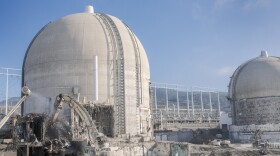About 45,000 additional voters are likely to cast ballots in the 52nd Congressional District race this November, which could affect the election's outcome, according to an analysis released Monday from the National University System Institute for Policy Research.
Vince Vasquez authored the report and predicts these new voters have more in common with the Democratic incumbent, Rep. Scott Peters, than his Republican challenger, Carl DeMaio.
"They're generally younger, they tend to be more Caucasian and affluent, and a significant number live in more urban developments," Vasquez said.
Even so, he said, DeMaio did well in the parts of the district that are in San Diego when he ran for mayor in 2012.
Neither the DeMaio nor the Peters campaign responded to a request for comment on the report.
Vasquez used voting data from 2010 to predict which precincts will have more new voters this November, then compared those results to how the precincts voted in the June primary.
He said the new voters lean mostly Democratic or decline to state a party preference. They also live in new, denser developments in North County and in the more coastal and urban neighborhoods of San Diego, Vasquez said.
Fewer new voters live in the district's older San Diego neighborhoods like Clairemont and Navajo.
Vasquez found that the new voters also live in areas that Peters used to represent when he served on the San Diego City Council from 2000 to 2008.
"So voters may already be familiar with him, may have already cast ballots for him in old races," Vasquez said. "We also see that being an inherent advantage for Scott Peters, having more credibility by speaking with them first."
Vasquez said DeMaio, who served on the City Council from 2008 to 2012, also has advantages in the congressional district, including a Republican edge in voter registration. In the 52nd District, 34 percent of voters are Republicans and 32 percent are Democrats.
Across San Diego County, Vasquez predicts 280,000 new voters who didn't cast ballots in the June primary could cast ballots in the Nov. 4 general election. They could help bump voter turnout from the abysmally low 27 percent in June to 42 percent to 46 percent in November, he said.
These new voters could also affect other races, including San Diego's City Council District 6 and mayoral races in Chula Vista, Encinitas, El Cajon, Escondido, La Mesa, National City, Poway and Vista.
Although the governor's race is not expected to be competitive and there's no presidential race to drive voters to the polls, Vasquez said the abundance of small local races is enough to boost turnout.
"There are more candidates and campaigns, more people going door to door, and that gives people more reasons to show up to vote," he said. "Also, some voters take more time to make an informed decision. So while they may not have known enough about state races to vote in June, they've now had time to hear from candidates and research them, and so they will show up to vote in November."
He said the medical marijuana ballot measures in Encinitas and La Mesa could also draw out more voters.
The deadline to register to vote in California is Oct. 20. Mail-in ballots are being sent Monday to voters.






